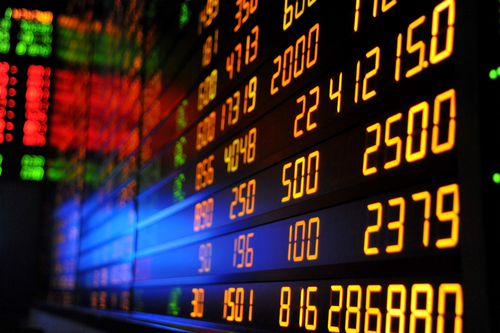
BEIJING — Asian stock markets were mixed Monday as investors looked ahead to U.S.-Chinese trade talks and the Federal Reserve’s update on its U.S. interest rate outlook.
Benchmarks in Hong Kong and Seoul advanced, while Shanghai and Sydney declined. Japanese markets were closed for a holiday.
On Wall Street, the benchmark Standard & Poor’s 500 index hit a new high Friday while the Dow Jones Industrial Average also eked out a gain but ended the week down.
U.S. and Chinese officials hold more negotiations this week on ending a bruising tariff war over Beijing’s technology ambitions. Both sides say they are making progress, which has helped to defuse anxiety that has battered global financial markets.
The Fed board meets Tuesday and is due to issue a statement on its interest rate outlook Wednesday.
“Traders will be nervously watching for changes in its dovish outlook,” said Jeffrey Halley of OANDA in a report. “My guess is these nerves are misplaced, and the Fed will happily keep its powder dry with the optionality to cut if needed.”
Hong Kong’s Hang Seng index rose 0.5% to 29,743.46 and Seoul’s Kospi advanced 0.7% to 2,195.52. New Zealand and Singapore also gained.
The Shanghai Composite Index lost 0.8% to 3,061.54 and Sydney’s S&P-ASX declined 0.6 % to 6,349.40. Taiwan and Jakarta retreated.
Investors also looked ahead to Chinese manufacturing surveys this week. China’s economic growth rate held steady in the latest quarter despite the tariff war with Washington, fueling optimism the country’s downturn is bottoming out.
The latest data, along with the Fed report, may give reasons to “maintain optimism through some combination of data buoyancy,” said Vishnu Varathan of Mizuho Bank in a report.
“But equally, there are signs that optimism is stretched,” he said. “Especially if China tempers stimulus, the Fed hesitates on further easing and the details of a trade deal reveal trouble spots.”
In energy markets, benchmark U.S. crude fell 35 cents to $62.95 per barrel in electronic trading on the New York Mercantile Exchange. The contract plunged $1.91 on Friday to close at $63.30.
Oil prices increased during the first quarter after OPEC and Russia to limit production. More recently, prices have risen after Washington announced it will end waivers from sanctions for countries that import oil from Iran, including China, India, Japan and South Korea.
Brent crude, used to price international oils, lost 29 cents to $71.34 per barrel in London. The contract fell $2 the previous session to $71.63.
In currency trading, the dollar gained to 111.95 yen from Friday’s 111.58 yen. The euro advanced to $1.1158 from $1.1149.